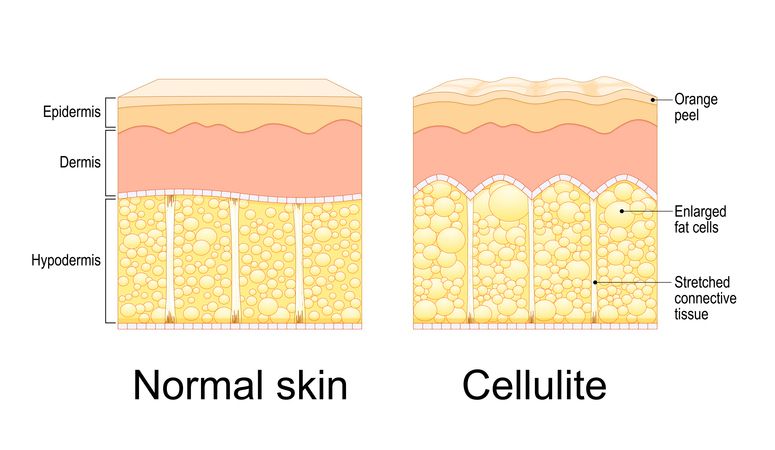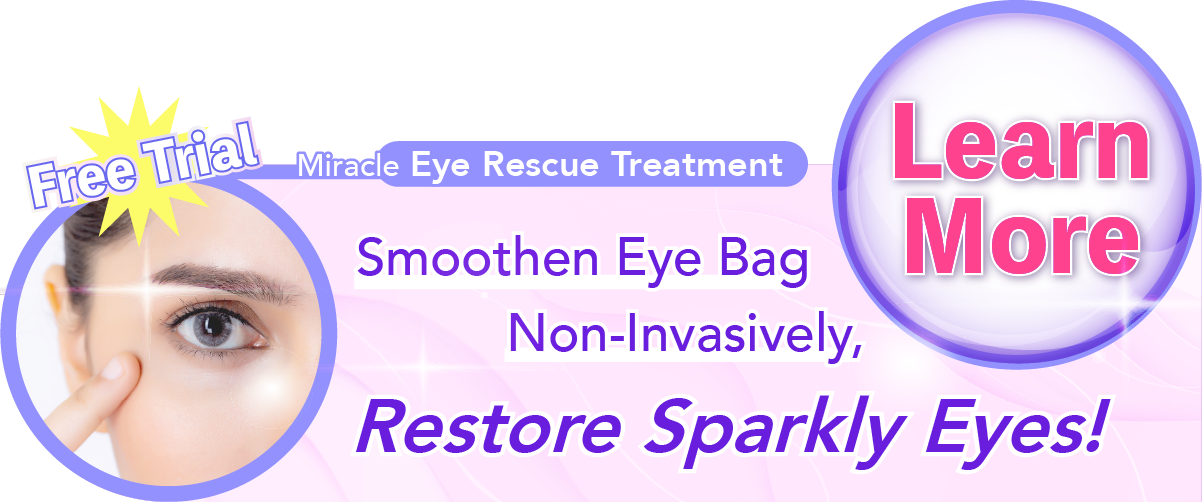
Author: Natalie Ng|Updated: 5 May 2025
Stress and diet can change how your skin looks—especially around your eyes. If you’ve noticed darker circles under the eyes after a few late nights or hectic weeks, you're not imagining it. Stress causes your body to release cortisol, which breaks down collagen and can mess with your sleep. That’s when puffiness and tired-looking eyes begin to show. At the same time, what you eat affects your skin, too. High salt intake can lead to swelling, while alcohol and caffeine can dehydrate the under eye area and make blood vessels more visible. A lack of key nutrients might also cause dark circles to form more easily, especially in people with darker skin tones. Understanding how stress and diet can affect the skin beneath your eyes is the first step in improving how it looks. Keep reading to learn how these lifestyle factors might be making eye circles worse—and what you can do about it.

Causes of Dark Circles

Thin Skin and Visible Blood Vessels
The skin beneath your eyes is thinner than the rest of your face. Because of this, the blood vessels underneath are more visible. When these blood vessels dilate or swell, they can create a blue or purple tint, leading to the appearance of dark eye circles. This is especially noticeable in people with fair skin, but those with darker skin tones may see increased pigmentation around the eye area instead.
Blood Flow and Swelling
Poor blood circulation can cause blood to pool under the eyes, making the area look darker. When the body releases histamines due to allergies, it can also lead to swelling, rubbing, and scratching—actions that irritate the skin and may darken the pigment over time.
Genetics and Skin Pigmentation
Your family history can affect how the under eye area looks. Some people naturally have more melanin, which leads to periocular hyperpigmentation or increased pigmentation around the eyes. This is more common in certain skin tones and can cause dark circles that don’t fade easily.
Aging and Structural Changes
As you age, your skin loses collagen and becomes thinner. Fat around the eyes also shifts or disappears, which can make the area look hollow. This reveals underlying blood vessels and can cast shadows that look like dark circles. The shadows cast by sagging eyelids and fine lines further contribute to the appearance of dark circles. Deep tear troughs under the eyes can also exaggerate this effect, especially in certain bone structures.

How Stress Affects Under-Eye Appearance
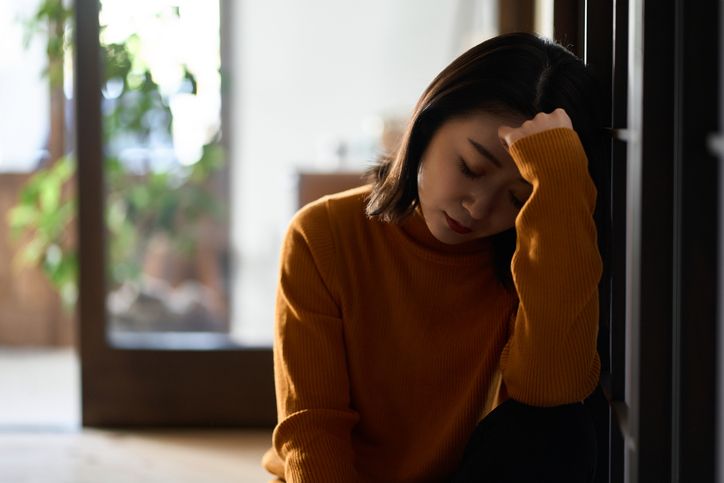
Cortisol Breaks Down Skin Structure
When you're under stress, your body produces more cortisol. This hormone breaks down collagen and elastin—the proteins that keep the under eye area firm and smooth. As these proteins weaken, the skin beneath your eyes becomes thinner. Thin skin makes blood vessels more visible, which causes dark eye circles to appear more clearly. People with lighter skin tones may see a bluish or purple tint, while those with darker skin tones may experience increased pigmentation.
Disrupted Sleep Leads to Puffiness and Shadows
Chronic stress often interferes with sleep. Poor rest causes fluid retention, which leads to puffy eyes and swelling in the under eye area. This fluid buildup casts shadows and makes circles under the eyes look deeper and darker. Lack of sleep also reduces blood circulation, making your skin look pale and dull—further emphasizing the appearance of dark circles. Getting more sleep can help reduce dark circles.
Repetitive Habits Can Damage Skin
High-stress levels often lead to unconscious habits like rubbing your eyes or frowning. Rubbing the eye area too much can break capillaries, increase irritation, and darken the skin. This repetitive motion also contributes to swelling and worsens the appearance of existing infraorbital dark circles. These habits are especially damaging to the thin, sensitive skin around the eye area and can lead to long-term pigmentation changes.
Read More
Book Now to Experience
Miracle Eye Rescue Treatment
1 Minute Self-Registration
Date should not be before minimal date

Key Dietary Factors That Worsen Dark Circles
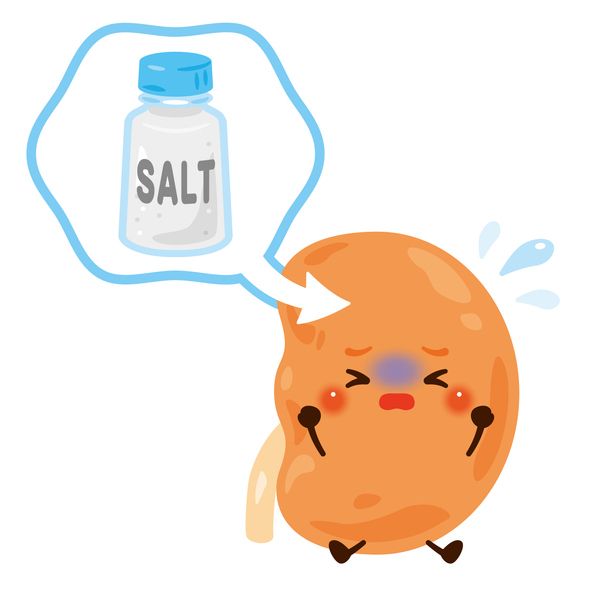
High Salt Intake Causes Puffiness
Eating too much salt can cause your body to hold onto water. This often leads to puffiness around the eyes, especially in the morning. Swelling in the under eye area creates shadows that make dark circles look more visible. For many people, reducing sodium in their diet is one of the simplest ways to improve the appearance of puffy eyes.
Alcohol and Caffeine Dehydrate the Skin
Both alcohol and caffeine act as diuretics, which pull water from your body. Dehydrated skin looks dull and thin, especially under the eyes. This makes blood vessels more visible and can darken the under eye area. Alcohol can also dilate blood vessels, which adds to the problem by increasing the visibility of veins and making the skin look more purple or blue.
Processed Foods Damage Collagen
Refined sugars and processed foods contribute to glycation—a process that weakens collagen and elastin. Without these supportive proteins, the skin beneath your eyes becomes less firm and more prone to sagging. Weak skin structure makes dilated blood vessels and pigmentation more noticeable, especially in those with increased melanin or periocular hyperpigmentation.
Lack of Nutrients Makes Skin Look Dull
A diet low in essential vitamins and minerals can lead to tired, pale-looking skin and make dark eye circles more prominent. Deficiencies in vitamin C, iron, or vitamin K can affect blood flow, collagen production, and skin tone. Without proper nutrients, the under-eye skin becomes less able to heal or recover from daily stress. Dark circles can also be a sign of potential health issues like iron deficiency anemia.

The Role of Sleep Quality and Stress Management
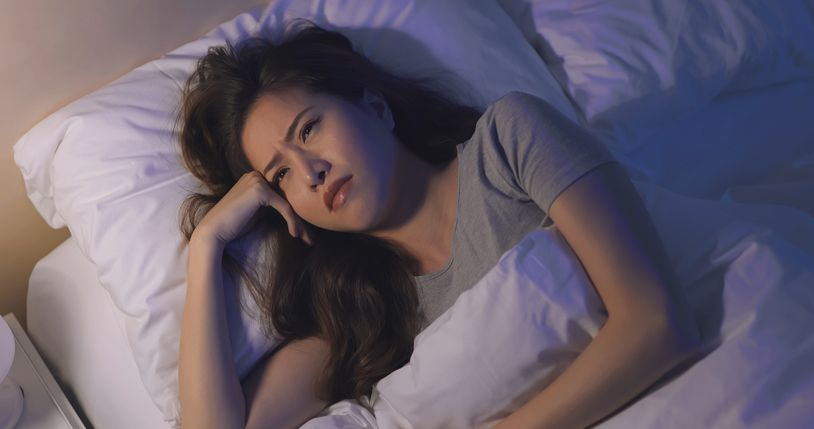
Poor Sleep Makes Blood Vessels More Visible
Lack of proper rest is one of the most common lifestyle factors that cause dark circles. When the struggle with dark circles under the eyes begins, various factors such as aging, genetics, fatigue, and lifestyle choices contribute to this common issue. When you don’t get enough quality sleep, blood vessels under the eyes dilate. This makes them easier to see through the thin under eye skin, which leads to visible discoloration and the appearance of dark eye circles. At the same time, fluid can build up under the eyes during restless nights, causing swelling and puffy eyes that deepen shadows.
Sleep Disruption Weakens Skin Health
Sleep is when the body repairs and rebuilds. Poor sleep limits collagen production and slows down cell renewal, leading to dull, tired skin. If you regularly sleep fewer than 7–8 hours or follow an irregular sleep schedule, your under eye area may appear darker, more hollow, and more prone to wrinkles over time.
Common Habits That Disrupt Sleep
• Looking at a computer screen or phone before bed
• Drinking caffeine or alcohol late in the day
• Inconsistent sleep and wake times
• Sleeping in a bright or noisy environment
Each of these can interfere with how well your body rests—and how your skin recovers overnight.
Chronic Stress Worsens Eye Circles
Long-term stress doesn’t just affect how you feel. It also keeps cortisol levels high, which breaks down collagen and interferes with sleep. Both of these effects lead to a weaker skin barrier around the eyes and make under eye dark circles worse. The skin may look paler during stressful times due to reduced blood circulation, which exaggerates the contrast with the darker under eye area. Many people seek treatments for dark circles primarily for cosmetic reasons.
Managing Stress Helps Skin Recovery
Stress management plays a key role in reducing the appearance of dark circles. Regular physical activity boosts blood circulation and helps your body release tension. Creating healthy boundaries with work and screen time can also improve your ability to rest. Reducing stress supports deeper, more consistent sleep—helping the eye area heal and making the skin look brighter over time.
Book Now to Experience
Miracle Eye Rescue Treatment
1 Minute Self-Registration
Date should not be before minimal date

Essential Nutrients for Healthy Under-Eye Skin

Vitamin K Supports Blood Circulation
Vitamin K helps strengthen the walls of blood vessels. When these vessels are weak or leaky, blood can pool under the eyes and make dark circles more visible. By improving circulation and reducing buildup, vitamin K can help shrink dilated blood vessels and lessen discoloration in the under eye area. Foods like kale, spinach, and broccoli are rich sources of this vitamin.
Incorporating eye creams that contain vitamin K into your skincare regimen can further help address dark circles and improve the overall appearance of the eye area.
Vitamin C Boosts Collagen Production
Vitamin C is essential for making collagen, the protein that keeps skin firm and elastic. Higher collagen levels help maintain thicker skin beneath the eyes, which can reduce the visibility of blood vessels. Vitamin C also helps reduce pigmentation and promotes brighter, more radiant skin. You’ll find it in citrus fruits, berries, bell peppers, and dark leafy greens.
Iron Prevents Pale, Tired Skin
Iron deficiency reduces the oxygen-carrying ability of red blood cells, which can cause the skin to look pale and tired—especially around the eyes. Low iron levels may also lead to increased pigmentation and dullness in the under eye area. Good sources include red meat, lentils, pumpkin seeds, and spinach.
Vitamin E Protects Delicate Skin
Vitamin E helps defend the under eye skin against free radical damage from sun exposure and stress. It also supports skin repair and keeps the eye area moisturized. This nutrient helps reduce puffiness and can improve the appearance of dark circles over time. Nuts, seeds, and avocados are rich in vitamin E and support overall skin health.

Nourishing Foods for Eyes
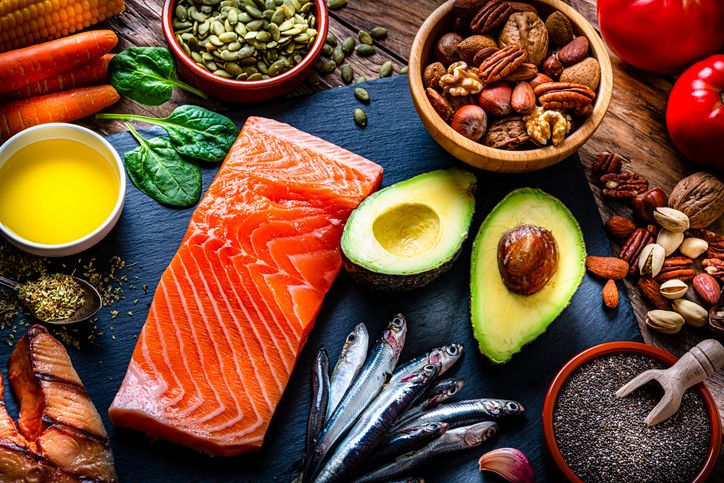
Fatty Fish Reduces Inflammation
Fish like salmon, mackerel, and sardines are rich in omega-3 fatty acids. These healthy fats help reduce inflammation in the body and support skin elasticity. Stronger, more flexible skin around the eyes can make dark circles less visible and reduce puffiness. Omega-3s also support better blood circulation, which improves skin tone and overall appearance.
Leafy Greens Improve Blood Flow
Dark leafy vegetables like spinach, kale, and Swiss chard are packed with iron and vitamin K. Iron helps prevent tired-looking, pale skin by supporting red blood cell function. Vitamin K works to strengthen blood vessels and reduce the appearance of circles under the eyes caused by poor circulation or excess fat buildup.
Orange Fruits and Vegetables Support Skin Renewal
Carrots, sweet potatoes, and mangoes contain beta-carotene and vitamin A, which support healthy skin turnover and repair. These nutrients keep the under eye area firm and help reduce signs of fatigue, like dullness or wrinkles. Consistent intake can also protect against increased pigmentation and uneven skin tone.
Antioxidant-Rich Foods Brighten Skin
Berries, bell peppers, and citrus fruits are loaded with antioxidants—especially vitamin C. These foods help brighten the skin beneath your eyes by stimulating collagen and protecting against free radicals. Antioxidants also reduce the appearance of dark eye circles caused by sun exposure or aging.
Zinc Supports Skin Healing
Zinc plays a key role in skin repair. It helps the skin recover from minor damage caused by rubbing, scratching, or inflammation. Foods high in zinc—such as pumpkin seeds, oysters, and chickpeas—support healthy tissue renewal and can improve the overall appearance of the under eye area.
Book Now to Experience
Miracle Eye Rescue Treatment
1 Minute Self-Registration
Date should not be before minimal date

Natural Remedies and Lifestyle Changes
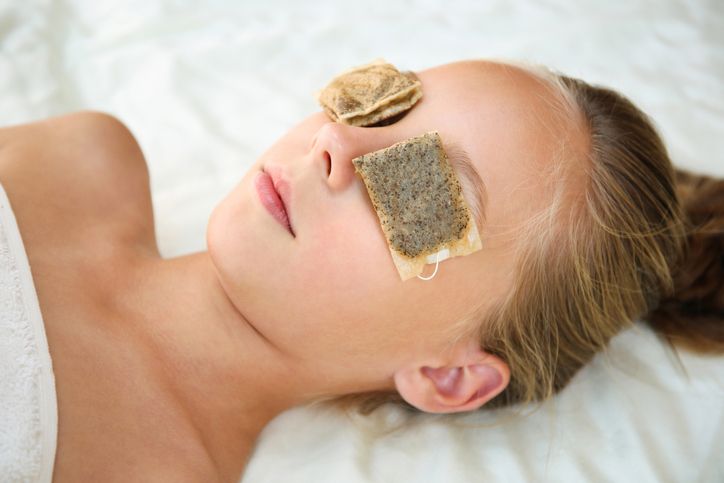
Cold Compresses Reduce Puffiness
A cold compress helps reduce swelling in the under eye area by tightening blood vessels and improving circulation. This can shrink dilated blood vessels, reduce puffiness, and lessen the appearance of dark eye circles. Apply a chilled, damp cloth or a cold gel eye mask over your eyes for about 10 minutes daily to see gradual improvement.
Tea Bags Soothe and Brighten
Cold tea bags—especially green or black—contain antioxidants and caffeine that can improve blood circulation and reduce fluid retention. When placed cold over the eyes, they help reduce puffiness and lighten dark shadows. Save your used green tea bags and refrigerate them for a short period before applying them to the eyes for 10–15 minutes.
Natural Oils Nourish the Skin
Cold-pressed almond oil, rich in vitamin E and antioxidants, can moisturize and strengthen the thin skin beneath the eyes. Apply a small amount before bed to help reduce the appearance of dark eye circles and support skin repair. Rosehip oil and coconut oil may also help improve skin tone and elasticity in the under eye area.
Sleep Position and Hydration Matter
Sleeping with your head slightly elevated can help prevent fluid from pooling under your eyes overnight. Use an extra pillow to keep your head raised and reduce morning puffiness. Staying hydrated throughout the day also helps maintain skin elasticity and flush out excess salt, reducing the chance of swelling.
Screen Time and Eye Strain
Too much time in front of a computer screen can lead to eye strain, which may contribute to rubbing, squinting, and increased under-eye darkness. Taking regular screen breaks and adjusting screen brightness can help protect the skin around the eyes and prevent long-term darkening.
Managing Stress for Long-Term Results
Lifestyle factors like chronic stress and poor sleep make dark circles worse over time. Managing stress through regular exercise, outdoor walks, or setting boundaries with work can support better sleep and skin health. Avoid harsh rubbing or scratching of the under eye area, as repeated irritation can cause long-term hyperpigmentation or worsen periocular darkening. Additionally, home remedies such as cold compresses and eye creams can be effective in reducing the appearance of dark circles caused by factors like fatigue, genetics, and allergies.

Miracle Eye Rescue Treatment: A Boost for Stressed and Tired Eyes
Stress and diet are two major lifestyle factors that can cause dark circles, eye bags, and puffiness. While improving your habits can help over time, some changes to the under eye area—like sagging skin, fluid buildup, or excess fat—can still remain. This is where targeted treatment like the Miracle Eye Rescue Treatment makes a real difference. Additionally, various treatment options, including home remedies and medical interventions, are available to address dark circles, and consulting healthcare providers for persistent cases is recommended.
How It Works
The Miracle Eye Rescue Treatment combines triple-wavelength medical-grade radio frequency (RF) energy with red and blue light therapy. Together, they target multiple layers of the skin beneath your eyes.
• RF energy encourages blood circulation, which helps reduce fluid retention and improves the appearance of puffy eyes.
• Red light boosts collagen production, which helps firm the under eye area, reduce fine lines, and improve skin tone.
• Blue light helps dissolve excess fat in the eye bags and works to improve visible dark eye circles by supporting better skin clarity and reducing increased pigmentation.
This combination supports the repair of thin skin caused by cortisol breakdown and poor sleep, two effects of chronic stress. It also offsets damage from poor nutrition, which can leave skin pale, weak, and prone to swelling. Additionally, chemical peels are another medical treatment option for addressing dark circles under the eyes.
Why It Helps
If stress and diet have already led to under eye puffiness, visible blood vessels, or dull skin, this treatment gives your skin a physical push toward recovery:
• Non-invasive and comfortable: No injections, surgery, or downtime required
• Targets multiple concerns at once: Works on eye bags, dilated blood vessels, tear troughs, and fine lines
• Safe for most skin types: Suitable even for those with darker skin tones or periorbital hyperpigmentation
• Instant and ongoing results: Many notice visible improvements after one session, with continued results as collagen builds up
Whether your eye circles are caused by poor sleep, high salt intake, or stress-related habits like rubbing the eyes, the Miracle Eye Rescue Treatment offers a focused and effective option that supports both immediate relief and long-term skin health. Additionally, incorporating a quality eye serum can significantly reduce dark circles by revitalizing the delicate skin around the eyes.
Ready to reduce your dark circles and wake up looking refreshed? Book your Miracle Eye Rescue Treatment today for smoother, brighter, and more confident eyes.
New Beauty's R6 Miracle Eye Rescue TreatmentBook Now to Experience
Miracle Eye Rescue Treatment
1 Minute Self-Registration
Date should not be before minimal date
FAQ
Can Wearing Glasses Make Dark Circles Appear Worse?
Your glasses can indeed make dark circles appear more noticeable. The frames create shadows and draw attention to the under-eye area, while thick lenses might magnify any discoloration. If you're concerned, try switching to thinner frames, anti-reflective coatings, or contact lenses. You can also adjust your glasses to sit higher on your nose bridge to minimize shadowing under your eyes.
Do Genetics Play a Significant Role in Developing Dark Circles?
Your genetic makeup plays a major role in whether you'll develop dark circles under your eyes. If your parents or close relatives have them, you're more likely to develop them too. Your inherited skin thickness, melanin production, and blood vessel visibility all contribute to this trait. You can't change your genes, but you can work with your natural features through targeted skincare and lifestyle adjustments.
At What Age Do Dark Circles Typically Start Becoming Noticeable?
You might notice dark circles appearing as early as your teenage years, though they're most commonly spotted in your mid-20s to early 30s. It's fascinating how these shadows can creep up just when you're breaking free from conventional beauty standards. While some see them in their late teens, others don't develop them until their 40s. Your unique genetic makeup, lifestyle choices, and self-care routines influence their timing.
Can Excessive Screen Time Contribute to Dark Circles Under Eyes?
Yes, excessive screen time can definitely contribute to dark circles under your eyes. When you're staring at digital screens, you tend to blink less frequently, leading to eye strain and fatigue. This can cause the blood vessels around your eyes to dilate and become more visible through your skin. To protect yourself, try following the 20-20-20 rule: take a 20-second break every 20 minutes to look at something 20 feet away.
Do Certain Eye Makeup Products Help Prevent Dark Circle Formation?
While makeup products don't prevent dark circles from forming, you can choose supportive cosmetics that won't aggravate the delicate under-eye area. Look for products with skin-loving ingredients like vitamin K, caffeine, and hyaluronic acid. You'll want to avoid heavy, pore-clogging concealers that could stress the skin. Instead, opt for lightweight, non-comedogenic formulas that let your skin breathe while providing coverage.
Recommended Articles
COPYRIGHT© NEW BEAUTY MANAGEMENT LIMITED 2025. ALL RIGHT RESERVED.

